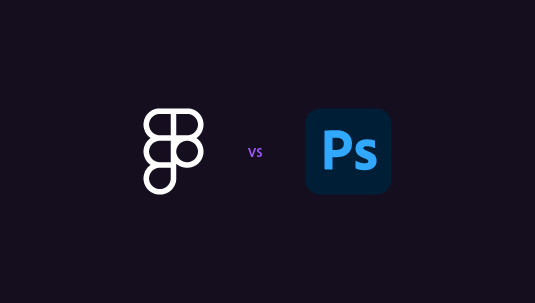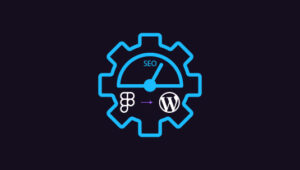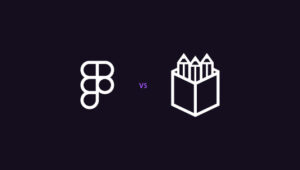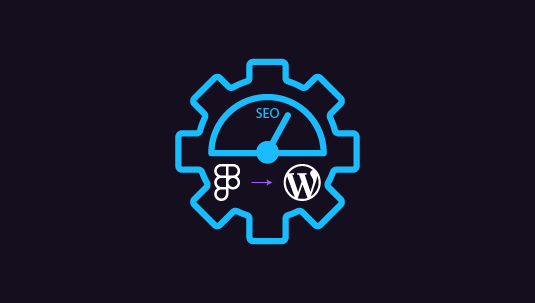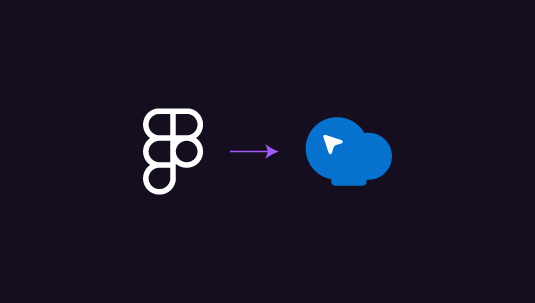Wondering about integrating Figma and Photoshop in your WordPress development workflow? Figma vs Photoshop is a tough choice for any web designer, they are both pretty amazing when you think about it. Figma’s all about teamwork. It’s online, so you can work with others in real-time. It’s great for making website layouts and testing how they’ll work. Photoshop? It’s been around forever and it’s still awesome for editing photos and making detailed graphics.
If you’re into making website designs, you’ll probably use both. Figma’s your go-to for the overall look and feel, while Photoshop helps you make those eye-catching images pop. Want to know which one’s best for you? Let’s dive into the pros and cons of each!
Table of Contents
ToggleFigma and Photoshop: A Brief Overview
Let’s dive into these two powerhouse design tools and enquire into their different purposes and unique strengths.
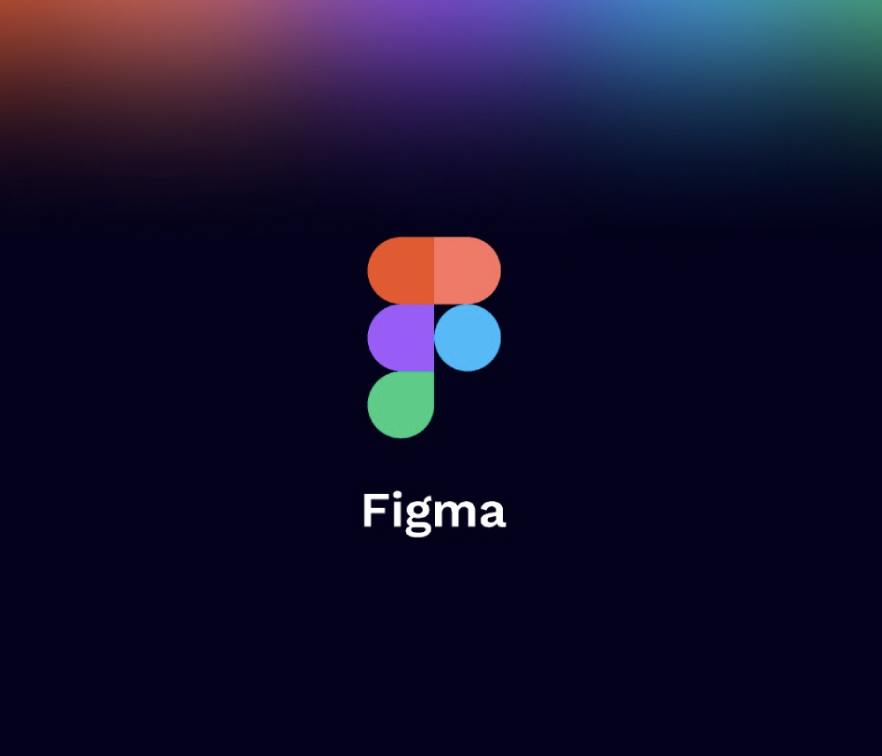
Figma: Figma is a cloud-based design tool that’s shaking up the design world. It’s built for collaboration and is particularly useful for creating user interfaces, website layouts, and app designs.
Key Highlights:
- Browser-based: Works on any computer without installation
- Real-time collaboration: Multiple designers can work on the same file simultaneously
- Prototyping: Easily create interactive mockups of your designs
- Design systems: Build and maintain consistent design libraries
Love the Crystal-clear Quality of Design Output on Figma?
Now transfer it to your websites too! Our expert team is capable of converting creations from your most-loved designs app into stunning, high-resolution web pages.
Photoshop: Photoshop is Adobe’s flagship software and has been an industry standard for decades. It’s a robust tool primarily used for image editing, digital painting, and creating complex graphics.

Key Highlights:
- Advanced photo editing: Powerful tools for retouching and manipulating images
- Layer-based editing: Work on different elements separately for maximum control
- Extensive plugin ecosystem: Thousands of add-ons to extend functionality
- Precision tools: Create highly detailed graphics and illustrations
Know More: Step-by-Step Guide to Converting PSD to WordPress as a Theme
Figma vs Photoshop in the Web Designing Context
You’ve probably heard designers debate Figma vs Photoshop. Both are powerful, but they shine in different areas. Let’s dig into what makes each one tick for web design.
Collaboration: Figma’s Team-Friendly Approach vs. Photoshop’s Solo Strength
Figma is like a digital whiteboard where everyone can draw at once. It’s built for teamwork from the ground up. You and your colleagues can work on the same file in real-time, no matter where you are. Need feedback? Just leave a comment right on the design. It’s like having a virtual design studio.

Photoshop, on the other hand, is more of a personal workspace. It’s great for those times when you need to focus and get in the zone. You work on your own, perfecting every pixel. When you’re done, you can share your work through Creative Cloud. It’s ideal if you prefer to polish your designs before showing them off.
- Figma: Real-time teamwork, built-in comments, shared libraries
- Photoshop: Single-user focus, file sharing via Creative Cloud, version history
Prototyping: Figma’s Interactive Designs vs. Photoshop’s Static Visuals
Figma lets you bring your designs to life without writing a single line of code. You can turn your static layouts into clickable prototypes right in the app. In Figma vs Photoshop, it is with Figma that you can link your screens, add transitions, and voila! You’ve got a working model of your website or app. Want to show your client? Just send them a link.

Photoshop is all about creating stunning visuals, but it stops short of making them interactive. It’s perfect for crafting beautiful graphics and layouts. But if you want to show how your design works in action, you’ll need to pair it with another tool. Photoshop is the painter, not the animator.
- Figma: Built-in prototyping, easy screen linking, shareable prototypes
- Photoshop: Static image creation, limited interactivity, needs extra tools for prototypes
More Insights: How to Create Figma to Elementor WordPress Template?
File Management: Figma’s Cloud-Based System vs. Photoshop’s Local Storage
Figma lives in the cloud. Your work is automatically saved as you go, and you can access it from any computer with internet. No more lost files or forgotten USB drives. It’s like having a magic sketchbook that’s always with you and never runs out of pages.
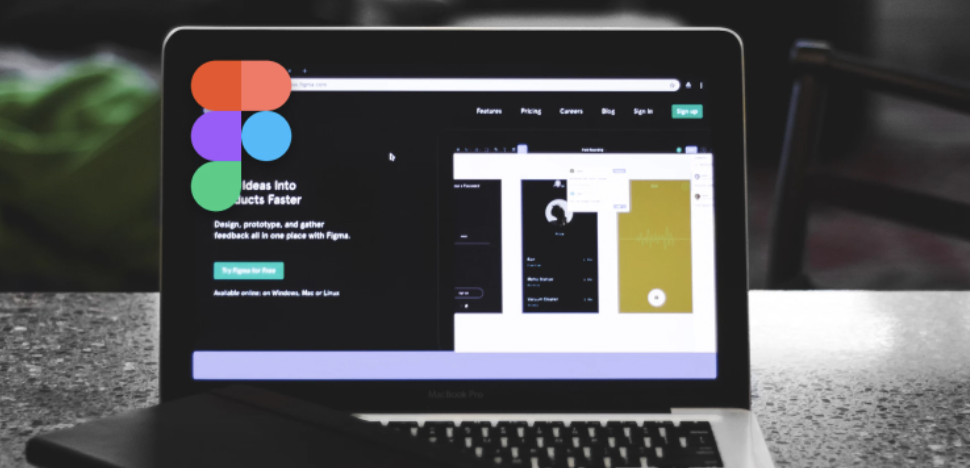
Photoshop keeps things local. Your files live on your computer, which means you’re in charge of saving and organizing them. It’s like having a physical art studio – everything’s there when you need it, but you need to keep it tidy. The upside? You can work offline anytime.
- Figma: Auto-saving, cloud storage, access from anywhere
- Photoshop: Local storage, manual saving, full control over files
Learning Curve: Figma’s User-Friendly Interface vs. Photoshop’s Complex Toolkit
Figma feels familiar right from the start. If you’ve used web apps before, you’ll feel at home. Its tools are straightforward, and there are tons of free tutorials to help you along. It’s like learning to ride a bike with training wheels – you’ll be zooming along in no time.
Photoshop is more like learning to drive a car with manual transmission. There’s a lot to take in at first, and it might feel overwhelming. But once you get the hang of it, you can do some amazing things. And with decades of tutorials out there, you’re never short on learning material.
- Figma: Intuitive interface, web-based familiarity, quick to learn
- Photoshop: Complex toolkit, steeper learning curve, deep capabilities
Interested In More Comparison Guides?
Figma vs Adobe XD: Which is Better for UI/UX Design?
Design Systems: Figma’s Built-in Libraries vs. Photoshop’s Asset Export
In Figma vs Photoshop, Figma makes creating and using design systems more of a breeze. You can build a library of components, styles, and assets right in the app. Need to use that button you made last week? Just drag it in from your team library. It’s like having a digital parts bin that’s always up to date.
Photoshop doesn’t have built-in design system features when it comes to an all-out Figma vs Photoshop comparison. You can create assets and export them, but keeping everything consistent across files takes more work. It’s more like having a folder of images you copy and paste. You’ll need to manually update each instance if you make changes, which can be time-consuming for big projects.
- Figma: Built-in component libraries, easy updates, team-wide consistency
- Photoshop: Manual asset management, separate organization needed, more prone to inconsistencies
Vector vs. Raster: Figma’s Scalability vs. Photoshop’s Pixel Precision
Figma works primarily with vector graphics. This means your designs stay crisp and clear no matter how big or small you make them. It’s perfect for creating responsive designs that look good on any screen size. Think of it like drawing with rubber bands – stretch them as much as you want, they’ll never get blurry.
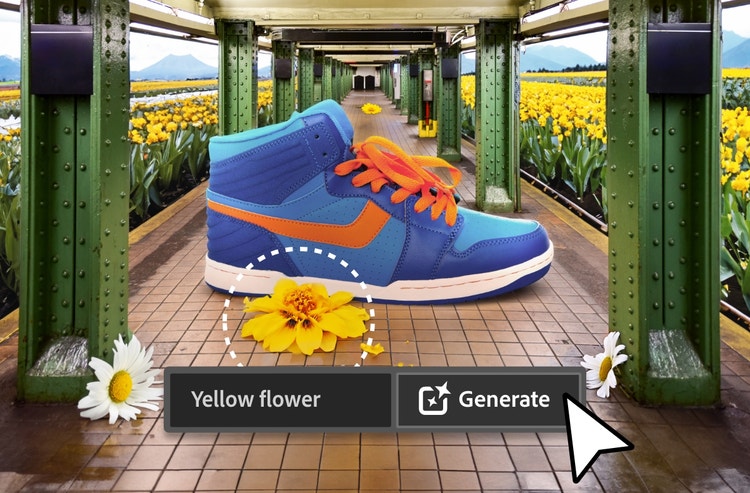
When comparing Figma vs Photoshop, we find out that Photoshop is a raster-based program at its core. It excels at manipulating pixels, which is great for detailed photo editing and creating texture-rich graphics. But when you scale things up, they can get fuzzy. It’s like working with a digital canvas – amazing for painting, but not ideal for logos that need to work at any size.
- Figma: Vector-based, infinitely scalable, great for responsive design
- Photoshop: Raster-based, pixel-perfect editing, best for fixed-size graphics
Also Check: How to Convert Figma to WebFlow: A Step-by-Step Guide
Performance: Figma’s Light Footprint vs. Photoshop’s Resource Hunger
Figma runs in your browser, which means it’s pretty light on your computer. You can open it up and start designing without waiting for a hefty program to load. It’s like driving a nimble sports car – quick to start and responsive on the go.
Photoshop is more resource-intensive. It’s a big program with lots of features, which means it can slow down your computer, especially with large files. It’s more like a powerful truck – it can handle heavy loads, but it takes more fuel to run.
- Figma: Browser-based, quick to start, works well on most computers
- Photoshop: Desktop software, slower startup, may require a powerful computer
Find Out More: Best Figma to WordPress Conversion Tools [Top Picks]
Verdict: Which Design Tool Has More Pros for Web Designing?
When it comes to web design, Figma edges out Photoshop in several key areas. Its collaborative features, built-in prototyping, and cloud-based workflow make it a powerhouse for modern web design teams. Figma’s vector-based approach ensures your designs look crisp on any screen size, which is crucial in today’s multi-device world.
That said, in Figma vs Photoshop, Photoshop still has its place. It’s unbeatable for detailed image editing and creating complex graphics. But for pure web design work, Figma’s pros outweigh its cons:
- Real-time collaboration speeds up teamwork
- Cloud storage keeps your files safe and accessible
- Built-in prototyping saves time and effort
- Vector graphics ensure scalability across devices
- Lighter performance means faster work, even on less powerful machines
If you’re focusing on web design, Figma is likely your best bet. It’s built for the modern web workflow, from wireframing to prototyping. But remember, the best tool is the one that fits your specific needs. Many designers use both Figma and Photoshop, playing to each tool’s strengths. So don’t be afraid to experiment and find the combination that works best for you and your team.

